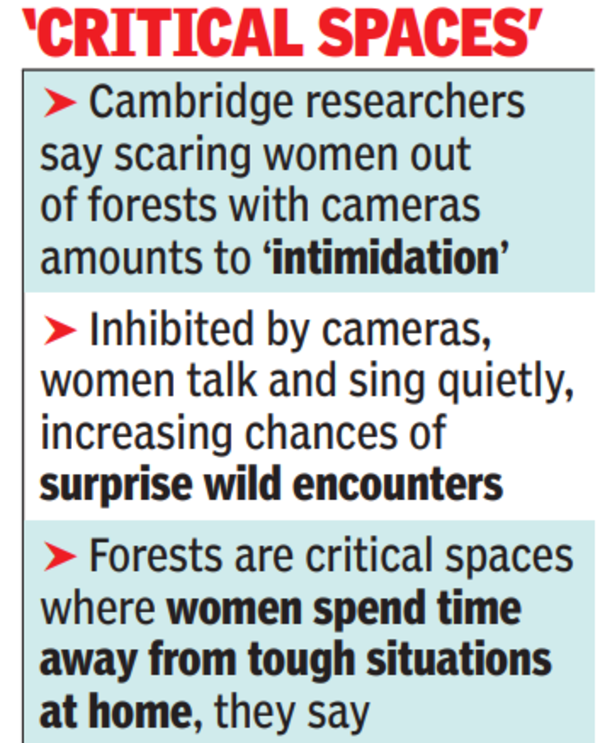DEHRADUN: Uttarakhand’s forest department has initiated an investigation after a study by researchers from University of Cambridge claimed that “digital technologies such as camera traps and drones, deployed for tracking wild animals at Corbett Tiger Reserve (CTR), are infringing on the privacy and rights of women living in villages and settlements near the forest”.
The peer-reviewed research article — ‘Gendered Forests: Digital Surveillance Technologies for Conservation and Gender-environment Relationships’ — by Trishant Simlai and Chris Sandbrook, documents several incidents of privacy violations, including one in which an image of asemi-nude woman relieving herself was “inadvertently” captured by a camera trap.

The woman was autistic, came from a marginalised caste group, and was unable to express her experience of being photographed to her family or other women. To make matters worse, young men, who were recently appointed as temporary forest personnel, accessed the photograph and circulated it on local social media groups. In response to this image-based abuse, residents from the woman’s village destroyed camera traps in the adjacent forest areas and issued threats to set a forest personnel station ablaze,” said the research, which was published on Nov 24.
It also cited instances where women felt “watched” due to camera traps. “This surveillance has discouraged women from collecting legally permitted forest resources like firewood and grass, as well as non-timber products such as herbs and honey,” the authors of the research said.
The study further said these technologies have curtailed traditional practices such as singing or engaging in loud conversations while navigating forests – behaviours that are not only culturally significant, but also serve as an essential countermeasure to deter attacks by wild animals . “There is a ‘baaghin’ (tigress) with cubs in this part of our forest. If we don’t sing or talk loudly, there is a chance of her being surprised and attacking us,” a woman shared during the research conducted by Simlai, who spoke to 270 people in the settlements near Corbett over a period of 14 months in 2019. Incidentally, one woman interviewed during the research has since been killed in a tiger attack.
Regarding the wider social implications , Simlai told TOI, “The forest is a very gendered space where very complex bunch of social interactions happen between women. But camera traps, which are deployed throughout Uttarakhand, not just in CTR, are making women regulate their behaviour in terms of censoring conversations, singing less, or collecting less firewood or timber or forest produce that is around. The absence of consent in deploying these cameras is also a glaring issue that govt must address.”
The study examines the dual role of surveillance technologies: while they perpetuate gender-based violence and reinforce patriarchal norms, they can also be repurposed for women’s resistance, it noted. “In one case, a woman led her abusive husband in front of a deployed camera trap with the objective to record domestic violence. She runs to the camera near her house whenever her husband gets drunk and beats her. In this way, she escapes being beaten and can also have proof if things get out of hand. Although such instances of utilising camera traps as tools of reverse surveillance or sousveillance are overshadowed by their role in propagating gendered structural violence, they warrant further investigation,” the research highlighted.
Ranjan Mishra, chief wildlife warden of Uttarakhand, said, “The director of Corbett will investigate the matter, and we will comment only after the probe is complete.”
